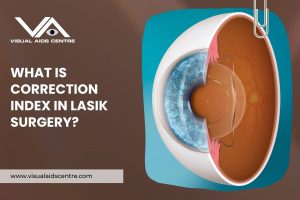Table of Contents
ToggleYes, getting LASIK at 25 can be a good option, provided you meet the necessary criteria for the surgery and have a stable prescription.
However, the decision should be based on thorough research, consultations with medical professionals, and an understanding of your unique vision needs.
For many young adults, LASIK represents an opportunity to transform the way they see the world—literally. Imagine waking up and seeing your alarm clock without fumbling for glasses or enjoying a clearer view without contact lenses drying out your eyes. But like any medical procedure, LASIK isn’t for everyone, and determining whether it’s the right move requires digging into the details.
Below, we’ll explore what LASIK involves, the benefits and risks, factors to consider at 25, and questions to ask your doctor before making a decision.
What is LASIK?
Laser-Assisted in Situ Keratomileusis (LASIK) is a popular refractive surgical procedure designed to correct common vision issues such as:
- Nearsightedness (myopia)
- Farsightedness (hyperopia)
- Astigmatism
The goal of LASIK is to reshape the cornea (the clear, front portion of the eye) so that light entering the eye focuses properly on the retina, resulting in clearer vision. The surgery itself typically takes less than 30 minutes and is considered safe and minimally invasive.
Benefits of LASIK Surgery
1. Improved Vision Quality
Studies show that over 95% of LASIK patients achieve 20/40 vision or better, while a significant majority attain 20/20 vision. This can dramatically improve your quality of life by eliminating or reducing reliance on glasses or contacts.
2. Convenience and Freedom
Glasses and contact lenses can feel restrictive, especially for active young adults. Whether you love travelling, sports, hiking, or just hate the hassle of eyewear, LASIK offers the chance for a more seamless lifestyle.
3. Quick Results and Recovery
Most LASIK patients experience improved vision within 24 hours, and full recovery typically takes 1-2 weeks. This quick turnaround appeals to people with busy lives who don’t want to deal with lengthy downtime.
4. Tried and Tested Technology
LASIK has been performed successfully for over two decades, with millions of patients worldwide. The procedure continues to rely on advanced technology, offering high precision and great outcomes.
Risks and Considerations
While LASIK is generally safe, it does have potential risks, just like any surgical procedure. Understanding these risks will help you make an informed choice:
- Dry Eye Syndrome
Some patients experience heightened dryness in their eyes post-surgery. While this is usually temporary, it can be frustrating if you’re prone to dry eyes.
- Night Vision Issues
Glare, halos, or starbursts around lights may occur at night after surgery. This side effect is usually temporary, but it can affect people who drive at night regularly.
- Over- or Under-Correction
Although rare, there is a possibility that LASIK may not achieve the desired results, requiring a second enhancement procedure.
- Loss of Future Corrections
LASIK doesn’t guarantee perfect vision forever. Age-related changes like presbyopia may still require you to wear reading glasses later in life.
Why 25 is a Good (or Not-So-Good) Age for LASIK
Why It’s a Great Age:
1. Stable Prescription:
Vision stabilisation is one crucial factor in LASIK candidacy. Your prescription typically stops changing in your early 20s, making 25 an opportune time to consider the procedure.
2. Early Benefits:
At 25, you can enjoy the benefits of improved vision for more years compared to someone who waits until their mid-30s or 40s.
3. Good Health:
Young adults typically have healthier corneas and faster healing capabilities, making them ideal candidates for LASIK.
4. Active Lifestyle:
If you’re into sports, fitness, or an active social lifestyle, LASIK can offer significant convenience over glasses or contacts.
Why It Might Not Be Ideal:
1. Financial Investment:
LASIK can cost anywhere from INR 50,000 to INR 1,00,000 for both eyes in India. At 25, some may feel it’s a high-cost procedure when other financial priorities (e.g., buying a home, paying off student loans) are pressing.
2. Future Vision Changes:
Even if your prescription stabilises at 25, events like pregnancy or certain medical conditions can cause hormonal changes that might impact your vision later in life.
What to Consider Before You Decide
1. Are You a Candidate?
Not everyone is eligible for LASIK. You need to meet specific criteria, including:
- A stable prescription for at least 1-2 years
- Healthy corneas with sufficient thickness
- No underlying eye conditions such as keratoconus, glaucoma, or severe dry eye
Your eye doctor (ophthalmologist) will carry out detailed tests to determine if LASIK is a safe option for you.
2. Do You Have Realistic Expectations?
LASIK isn’t magic—it won’t give you “superhuman” vision. Understanding the limitations and potential side effects ensures you won’t feel disappointed with the results.
3. Financial Considerations
While LASIK is a one-time investment, it’s important to weigh the cost against what you spend annually on glasses, contact lenses, and exams. Many clinics offer 0% financing options to make payments more manageable.
4. Doctor’s Expertise and Technology
Choosing the right surgeon and clinic is vital for success. Look for an experienced practitioner who uses the latest LASIK technology, as this increases accuracy and reduces risk.
Alternatives to LASIK
If LASIK doesn’t suit your needs or preferences, other vision correction options include:
- PRK (Photorefractive Keratectomy): Suitable for individuals with thin corneas
- SMILE (Small Incision Lenticule Extraction): A less invasive alternative to LASIK
- Orthokeratology (Ortho-K): Special lenses worn overnight to temporarily reshape the cornea
- Contact Lenses & Glasses: While not permanent, they remain safe and effective choices
The Final Word
Getting LASIK at 25 could be a fantastic decision if you’re a suitable candidate and value the convenience of reduced dependency on glasses or contact lenses. However, it’s important to approach the decision carefully, weighing the benefits, risks, and financial aspects.
If you’re wondering whether LASIK is right for you, the best thing to do is consult a trusted ophthalmologist. They’ll assess your vision and guide you based on your unique needs.
Take your time, research thoroughly, and make a choice that aligns with your lifestyle, priorities, and future vision goals. Clearer days might be closer than you think!













